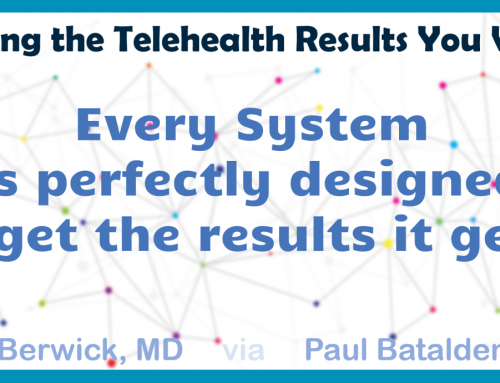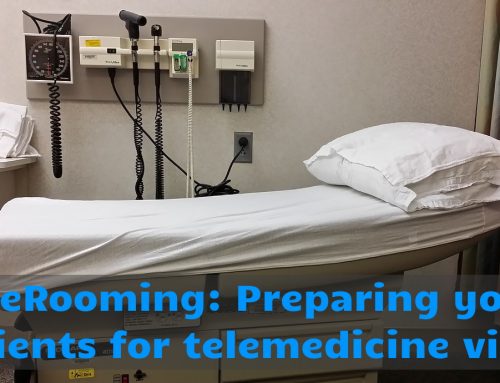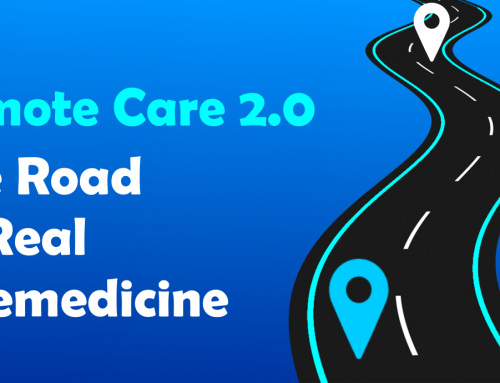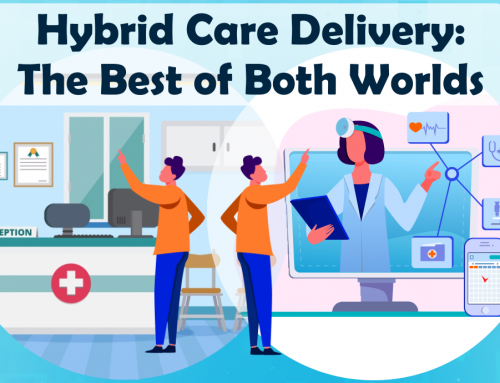It seems like these days every health system and every payor is launching a direct-to-consumer telemedicine service. Yet self-reportedly few of these programs result in the adoption that people had hoped for or anticipated.
“Direct-to-consumer” (DTC) telemedicine is but one of the many varieties of telehealth, though it is one of the best known. By most people’s definition, DTC telemedicine involves unscheduled (“ad hoc”) access to clinical expertise initiated by the patient, mostly around primary care issues.
Here are three key considerations and three actions that must be taken to ensure the success of your direct-to-consumer telehealth service.
1. Know your “WHY?”
The first consideration is about being very clear about your motive for launching this service. For some of my clients it was mostly a “me too” knee-jerk reaction because someone else (usually payors or a regional competitor) started promoting the availability of an online telemedicine service and leadership and the organization’s leaders (which sometimes included board members) felt compelled to create a similar offering.
There are a number of excellent reasons to start a direct-to-consumer telemedicine service, such as achieving your population health management goals or providing access to underserved population. But “me too” is not one of those reasons.
The action that you need to take is to establish the metrics to assess your performance against the objective or desired outcome of your DTC telemedicine service. Find the right lead measures (metrics that you have control over that will indicate whether you can achieve your outcomes, such as referrals made or communication sent) and lag measures (metrics that tell you retrospectively whether you met your objective). Then, put the proper processes and systems in place to collect and analyze the data and design the best way to present it in an actionable form. Lastly, develop a proper dashboard that for each metric not only defines the target, but specific actions triggered by missing or exceeding the target.
Oftentimes organizations describe “dismal” adoption rates on the telehealth service — which I mostly attribute to unrealistic expectations and lack of well-defined measures. Two of my most meaningful metrics are (1) how often a DTC visit replaced an in-person utilization and (2) how often a DTC visit provided care where none would have occurred otherwise (i.e., the patient would not have gotten help until it got worse). Improving those metrics greatly enhances the likelihood of a sustainably successful DTC program.
2. Stop Fretting about Adoption
The second consideration is closely associated with the first. Unless you made it your explicit objective that x% of your targeted population will have used the DTC service, stop agonizing about low adoption rates. Nobody opens up a clinical practice in a city of 100,000 and complains that less than one half of 1% of the population have used their service. Market share is not measured as a fraction of the population, but as a fraction of the overall utilization.
Instead you should examine the challenge of adoption from different angles: The in-person visits that DTC telemedicine replaced, the in-person visits that could have been replaced or even avoided by a DTC telemedicine visit and the DTC visits that had they not occurred could have led to an exacerbation of the patient’s condition.
Would the patient have gone to the ER or your (or your competitors’) urgent care? Or maybe used a payor’s telemedicine offering? Or tried to get an appointment with their primary care doctor or specialist? Or not gotten help at all (waiting until the condition got worse)?
And if they did not use telemedicine (but showed up in person) was the reason lack of awareness? Or lack of trust? Or lack of technology access (including internet coverage)?
These are the types of questions you should be fretting over.
The action to take is to first gather the above metrics and then to use them to set realistic expectations regarding adoption, analyze the actual utilization (and replicate what worked in achieving adoption) and enroll providers in making patients aware of (and endorsing) the availability of the telemedicine service.
3. Don’t exacerbate the fragmentation of care
One of the most concerning trends (largely driven by the billions of technology-focused venture capital dollars) is the use of technology (specifically telehealth) contributing to the fragmentation of care, rather than facilitation the continuity of care that leads to better health outcomes. When clinicians don’t have access to the patient’s history, the likelihood of misdiagnosis is increased and treatment plans may not be as effective, as the clinician is tapping mostly in the dark.
While an outsourced direct-to-consumer telemedicine program (where physicians not affiliated with your health system will provide the telecare) can be successful, at a minimum the documentation of each interaction with one of your patients should be documented in our EHR.
The action here is to create systems and processes that ensure that any DTC encounter gets captured in your EHR (ideally through a direct interface or native integration rather than a simple PDF import).



Driving Adoption
If you’re a headline skimmer and have skipped the sections above, at a minimum take the following recommendations to heart if you are planning to or have launched a direct-to-consumer telemedicine service:
Own it: To offer a valuable
direct-to-consumer telemedicine service, you have to take ownership of the patient experience. Even though you may outsource this service, from your patients’ perspective they are receiving medical care from your organization, your brand. You therefore want to own the experience – the processes, the messages, the payment. Don’t abdicate your responsibilities since only full ownership will lead to increased adoption and long-term sustainability.
Refer it: The single most effective way to promote anything new, whether in healthcare or not, are referrals by trusted experts. When your car mechanic of 18 years tells you about a new protective wax, you are likely to give it a try. When your physician or the friendly person at the check-in desk suggests to you to consider telemedicine, you are very likely to at least check it out. This requires a concerted effort to enroll your staff in the new DTC telemedicine service, making it something that “we” offer to “our” patients (and not “they” to “them”).
Integrate it: Direct-to-Consumer telemedicine cannot, should not live in a vacuum, on its own. It is critical to identify how for an episode of care a DTC visit can start an episode of care, how it can be used in between in-person visits, and how a DTC visit or series of visits can end an episode of care that started with an in-person visit. The integration must occur at the systems and at the process level (which will also make enrollment of staff easier).
Track it: The common theme of my recommendations focuses on good data collection. Good data can be woven into powerful stories that will entice patients and enroll your staff. Track your key performance indicators – especially as it pertains to the quadruple aim of improved health outcomes and lower cost (e.g., due to avoided utilization) as well as patient and provider/staff satisfaction.
The Future is Already Here – It is just not evenly distributed
DTC telemedicine is here to stay, but only you can make sure it is a great experience for the patients and at the same time good medicine. If you do so, you have nothing to fear from the impersonal, non-integrated DTC services offered by payors and, presumably, soon, by Amazon…








To receive articles like these in your Inbox every week, you can subscribe to Christian’s Telehealth Tuesday Newsletter.
Christian Milaster and his team optimize Telehealth Services for health systems and physician practices. Christian is the Founder and President of Ingenium Digital Health Advisors where he and his expert consortium partner with healthcare leaders to enable the delivery of extraordinary care.
Contact Christian by phone or text at 657-464-3648, via email, or video chat.







Leave A Comment